 Categories: Do You Know?
Categories: Do You Know?
Chinese and Greek philosophers had described the basic principles of optics and the camera since the 5th centuries BC. The science of optics was further improved by Ali Al-Hazen ibn Al-Haytham, an expert in Philosophy, Physics, Mathematics and the knowledge of Medicines. Most of his research work is on light that he describes in earlier of 10-11th century has now been tested and proven as exact, according to the latest knowledge using latest techniques. He is the person who first found the relationship between light source, lens and resultant image. That is why called as "Al-Hazen Theorem".
The camera obscura (above) (Latin for 'dark room') was the ancestor of the modern camera. It dates back to the Chinese philosopher Mo-Ti in the 5th century BC. The camera was actually a large room that would be entered by the user. It was documented by Leonardo DaVinci in his 1490 writings.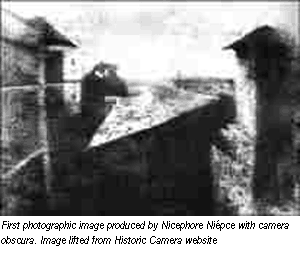
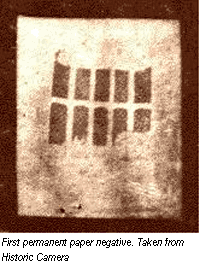 In 1727, Johann Heinrich Schulze discovered that silver nitrate darkened upon exposure to light. He experimented creating crude photographic impressions, but eventually it all turned black due to exposure.
In 1727, Johann Heinrich Schulze discovered that silver nitrate darkened upon exposure to light. He experimented creating crude photographic impressions, but eventually it all turned black due to exposure.
Joseph Nicéphore Niépce, in 1814, achieved the first photographic image with camera obscura - however, the image required eight hours of light exposure and this later faded. The first permanent paper negative known is produced by William Henry Fox Talbot in 1835. Louis-Jacques-Mandé Daguerre created the first image that was fixed and did not fade and needed under thirty minutes of light exposure in 1837. He named the new method daguerreotype.
A process that creates permanent paper negatives was invented by William Henry Fox Talbot in 1839. He called the process "Calotype" process, the true fore runner of today’s modern photography process.
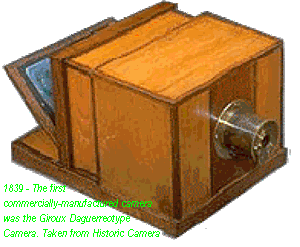
In 1839, Sir John Herschel used the term "photography" as the image capture process in a lecture to the Royal Society. He is credited for introducing the word to the general public. The term is derived from two Greek words meaning "light” (phos) and "writing" (graphien).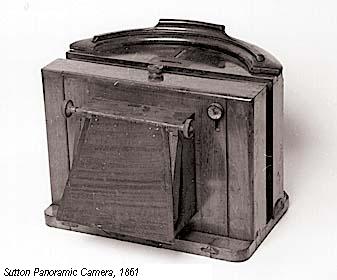
Frederick Scott Archer invented the Collodion process whereby images required only two or three seconds of light exposure. This was in 1851.
Charles Chevallier, of Paris, in 1858, built a camera with a curved plate which revolved, while the camera itself revolved in the opposite direction on an axis under the plate. The camera had radial shutters, limiting the surface of the plate exposed at anyone time. Also in 1858, Thomas Sutton came up with a panoramic camera which was made by Ross Optical Co. of London. Pictures made a 120 degree arc at f-12 on curved plates using a spherical lens filled with water to achieve the wide field effect. The Sutton Panoramic Camera was patented in 1859.
In 1871, Richard Leach Maddox invented the gelatin dry plate silver bromide process where negatives were no longer needed to be developed immediately.
1871, Richard Leach Maddox invented the gelatin dry plate silver bromide process where negatives were no longer needed to be developed immediately.

George Eastman founded the Eastman Dry Plate Company. This enabled mass-production of photographic dry plates. This marks the begining of the Kodak empire. He later invented the Kodak camera and introduced the rolled photographic film. The world first mass-marketed camera, the Kodak Brownie, was introduced by Kodak in 1900.


The modern flash bulb introduced by General Electric Co. in 1927. The concept of camera flash existed much before but was based on the use of a flash light powder that was invented by German researchers. Polaroid photography was invented by Edwin Land in 1948. His one-step process for developing and printing photographs created a revolution in photography - instant photography. Edwin Land founded the Polaroid Corporation to manufacturer his new camera. The first poloroid camera was sold to the public in November, 1948.
Polaroid photography was invented by Edwin Land in 1948. His one-step process for developing and printing photographs created a revolution in photography - instant photography. Edwin Land founded the Polaroid Corporation to manufacturer his new camera. The first poloroid camera was sold to the public in November, 1948.
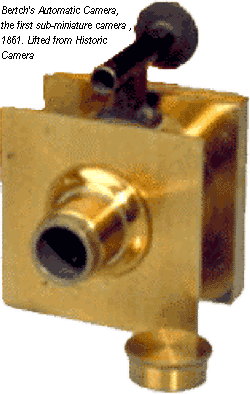
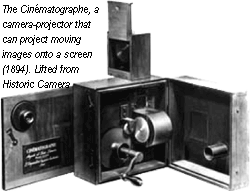
In 1984, Canon USA, the official Los Angeles Olympic sponsor, announced its successful development of a color electronic still camera, designed for commercial broadcasting use. Using a regenerator and transmitter developed at the same time, the company conducted practical tests at the Games. This color electronic still camera was the forerunner of today's digital cameras, and the 400,000-pixel CCD used in the tests represented the world's first practical application for public use. Based on data and experience from these tests, Canon began product development, culminating in the unveiling of the Canon Still Video System, the world's first electronic image camera, in 1986. 
References:
The Art of Photography - Timeline of Photography, Film, and Cameras
A Timeline of Panoramic Camera
History of Camera
A Brief History of Panoramic Photography
The Brownie Camera Page
Monday, May 29, 2006
Short history of photography
Posted by
Wormie
at
10:25
![]()
Subscribe to:
Post Comments (Atom)





No comments:
Post a Comment